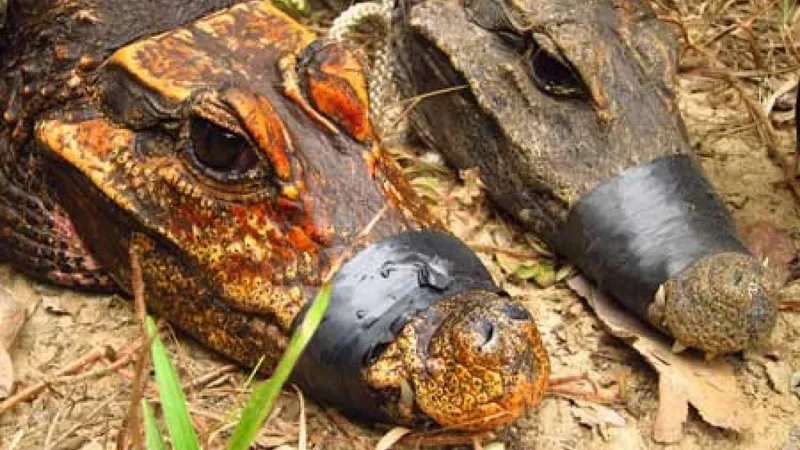
The Mysterious Orange Dwarf Crocodiles: Are They Evolving into a New Species?
2025-01-04
Author: Li
Deep within the enigmatic Abanda cave system in Gabon, a remarkable and unusual population of orange dwarf crocodiles, scientifically known as Osteolaemus tetraspis, make their home.
These captivating creatures have adapted to life in total darkness, where they hunt for cave crickets and feed on bats, showcasing a bizarre yet fascinating change in behavior compared to their forest-dwelling relatives.
Life in the Shadows
One of the most intriguing aspects of the cave-dwelling dwarf crocodiles is their unique environment. Living in complete darkness, these crocs swim in liquid guano—the droppings of bats—and thrive in this nutrient-rich habitat.
While the exact number of crocodiles inhabiting these caves is unknown, it is believed that they have been living subterranean lives for potentially thousands of years. This prolonged isolation may be leading them down the evolutionary path towards becoming a distinct species altogether.
A Study Like No Other
The first scientific study of these unusual crocodiles took place in 2010, marking a significant step in understanding this isolated population.
By 2016, researchers discovered considerable differences between the cave crocs and their forest counterparts. The cave-dwelling reptiles are reportedly in better physical condition, a phenomenon attributed to their abundant food supply and lack of predators in the caves.
It is speculated that these crocodiles lay their eggs at the mouth of the caves, allowing their young to explore the dark depths once they hatch.
The Mystery of Their Orange Skin
What sets these crocodiles apart even more is their striking orange skin.
This unusual coloration may have arisen from their extended exposure to bat guano, which contains urea. According to findings presented by Matthew Shirley, a conservation biologist from Florida International University, this prolonged bath in high-uropat content could chemically bleach their skin over generations.
Signs of Evolution
Further adding to the mystery, preliminary genetic analyses suggest that these orange cave crocodiles are undergoing mutations not found in their forest-dwelling relatives.
One specific haplotype identified in these crocodiles indicates they form an isolated genetic group, hinting at the early stages of speciation.
Richard Oslisly, a researcher from France's Institute of Research for Development, emphasized that due to this genetic isolation and the limited exchange of individuals with other populations, they may be in the throes of becoming a new species.
The Future of the Orange Crocodiles
As scientists continue to study the cave-dwelling dwarf crocodiles, questions remain about how quickly their evolution will unfold.
The tale of these unique reptiles is just beginning, as they adapt to their subterranean lifestyle with a mix of mystery and excitement.
What other secrets lay hidden in the depths of the Abanda cave system? Only time will tell.
Stay tuned for more fascinating discoveries about the natural world's most astonishing creatures!





 Brasil (PT)
Brasil (PT)
 Canada (EN)
Canada (EN)
 Chile (ES)
Chile (ES)
 Česko (CS)
Česko (CS)
 대한민국 (KO)
대한민국 (KO)
 España (ES)
España (ES)
 France (FR)
France (FR)
 Hong Kong (EN)
Hong Kong (EN)
 Italia (IT)
Italia (IT)
 日本 (JA)
日本 (JA)
 Magyarország (HU)
Magyarország (HU)
 Norge (NO)
Norge (NO)
 Polska (PL)
Polska (PL)
 Schweiz (DE)
Schweiz (DE)
 Singapore (EN)
Singapore (EN)
 Sverige (SV)
Sverige (SV)
 Suomi (FI)
Suomi (FI)
 Türkiye (TR)
Türkiye (TR)
 الإمارات العربية المتحدة (AR)
الإمارات العربية المتحدة (AR)